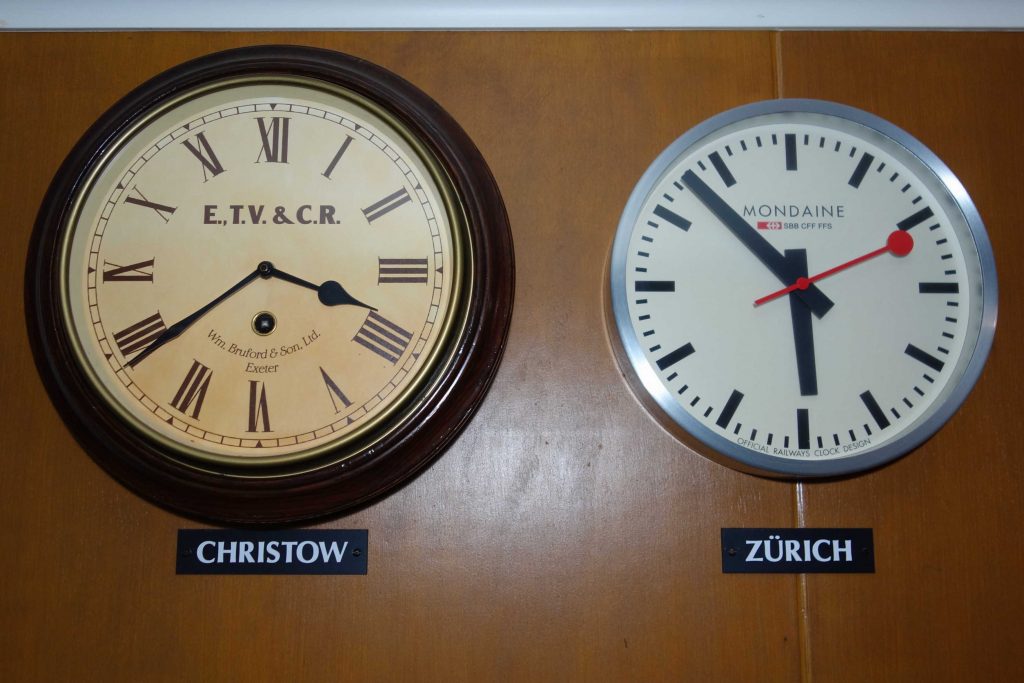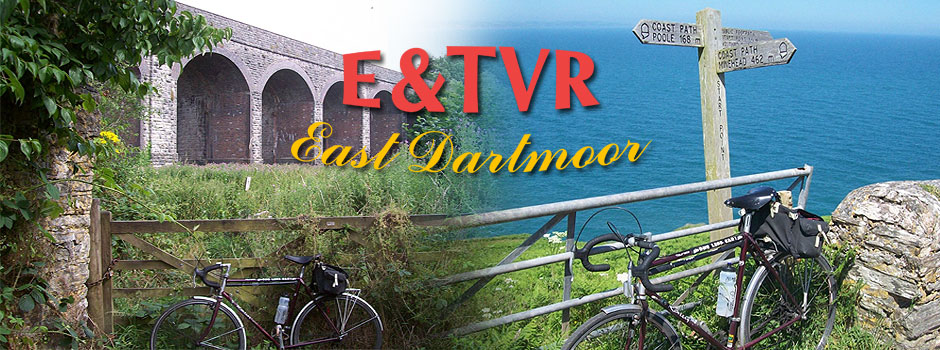Before the advent of railways, clocks were set according to the sun and there was a wide variation across the country. Exeter, 3½° west, would have set its clocks roughly 14 minutes behind London.
It must not have mattered much to east-west stagecoach proprietors that time varied over distances which it took a day to cover.
But, suddenly, Exeter was only five hours from London by train. Railways published accurate timetables and the telegraph made possible the transmission of time. Very quickly, “Railway Time,” properly Greenwich Mean Time, became standard wherever the iron horses and the copper wires went.
In the Temporary Booking Office at Christow, the traditional is juxtaposed with the modern. A very rare William Bruford clock, made for the Exeter, Teign Valley & Chagford Railway, is set to Exeter time all year round, while the Swiss Railways clock, introduced in 1944 and still the standard face today, is set to Central European Time. Note that it has a second hand.

This year, supposedly the 200th since the first passenger train ran, has seen the introduction of a new railway clock. It has a second hand of sorts.
